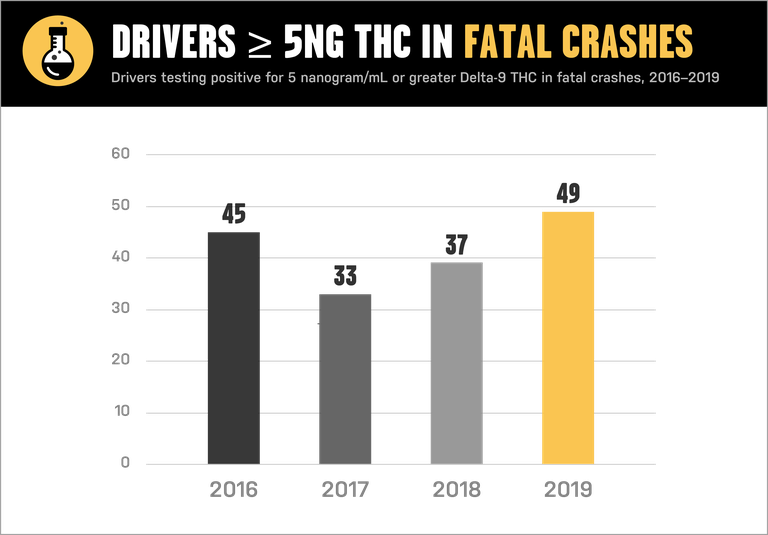CDOT launches new marijuana-impaired driving campaign created by Coloradans
News Release
Statewide — The Colorado Department of Transportation (CDOT) has launched a new campaign developed for Coloradans, by Coloradans, to curb marijuana-impaired driving across the state.
As part of a statewide initiative called The Cannabis Conversation that began in 2017, CDOT set out to ask Coloradans their thoughts about driving under the influence of marijuana. The purpose was to better understand the public’s attitudes and behaviors when it came to driving high — and to help CDOT better connect with audiences through education and prevention campaigns. Thousands of Coloradans can now see the input they shared as part of this process reflected in CDOT’s new campaign, “Uncomfortable High,” which launched this month.
To access CDOT’s creative campaign materials, visit: https://www.dropbox.com/sh/ziq6dqu9zev17cq/AAC3JtWgaWfXrmHncQ70bk8la?dl=0.
The new campaign comes at the right time. According to state data, fatal crashes involving marijuana have been on the rise since 2017 after falling the year before. In 2017, 33 drivers in fatal crashes tested positive for five nanograms or higher of Delta-9 THC — the psychoactive component of cannabis — with 49 testing positive in 2019.

Additional research is confirming the impairing effects cannabis has on driving. According to a National Highway Traffic Safety Administration's (NHTSA) review and analysis of 60 studies, marijuana inhibits safe driving abilities, such as tracking, motor coordination, visual functions, and complex tasks that require multitasking. To view more research from NHTSA and partners, visit feeldifferentdrivedifferent.org/severity-of-impairment.
“The point of The Cannabis Conversation was to learn how CDOT could more effectively communicate with Coloradans and influence their decision making,” said CDOT Communications Manager Sam Cole. “We took all the research and input we received from the public and molded it into this campaign with the goal of motivating Coloradans to not drive while high.
Through a series of online surveys, focus groups, workshops, meetings with dispensaries and trade organizations, public meetings and open houses, CDOT crowdsourced, vetted and tested creative concepts and messaging for its latest campaign. The result incorporates findings and feedback from more than 80,000 Coloradans statewide.
“I was able to contribute a little bit to an issue that is pretty important to our state… I think it’s great that cannabis users were involved. I felt like my opinion was valued,” said an anonymous research participant.
CDOT’s “Uncomfortable High” campaign stems primarily from feedback the agency received from Coloradans that, especially among heavy cannabis users, many people think it’s safe to drive high. By asking the audience to consider other professionals using marijuana while on the job, the campaign aims to give consumers pause to consider the similar risks of driving high. The ads remind Coloradans that “lives are at stake every time you get behind the wheel.”
“An important takeaway for us was challenging cannabis consumers to rethink the choice to drive under the influence and how it unnecessarily puts others at risk,” said Cole. “During the testing phase, people who were skeptical about the risks associated with cannabis-impaired driving responded to campaigns that invoked feelings counter to their deeply held beliefs that driving after consuming is solely a personal decision.”
The new campaign can be seen online, on connected TV devices, in print, at dispensaries and heard on the radio during September and October.
CDOT is continuing to partner with the cannabis industry statewide to help educate consumers about the laws and risks of driving under the influence of cannabis and providing resources and tools to help them make responsible decisions. To learn more about CDOT’s new campaign and view creative materials, visit DriveHighDUI.com.
COVID-19
Safe transportation infrastructure is essential for all of us, particularly for emergency first responders and freight drivers as Colorado navigates the COVID-19 pandemic. With that in mind, CDOT maintenance and construction crews follow social distancing and other health safety measures to reduce COVID-19 exposure on the worksite. The Colorado Department of Public Health and Environment announced guidelines for construction activities. The public is urged to join the campaign for #DoingMyPartCO by practicing social distancing and wearing face masks. As traffic returns to normal levels, motorists must drive cautiously and heed the speed limit so all of us can return home safely.
WHOLE SYSTEM. WHOLE SAFETY.
To heighten safety awareness, CDOT recently announced its Whole System — Whole Safety initiative. This project takes a systematic statewide approach to safety combining the benefits of CDOT’s programs that address driving behaviors, our built environment and the organization's operations. The goal is to improve the safety of Colorado’s transportation network by reducing the rate and severity of crashes and improving the safety of all transportation modes. The program has one simple mission—to get everyone home safely.
ABOUT CDOT
CDOT has approximately 3,000 employees located at its Denver headquarters and in regional offices throughout Colorado, and manages more than 23,000 lane miles of highway and 3,429 bridges. CDOT also manages grant partnerships with a range of other agencies, including metropolitan planning organizations, local governments and airports. It also administers Bustang, the state-owned and operated interregional express service. Governor Polis has charged CDOT to further build on the state’s intermodal mobility options.
